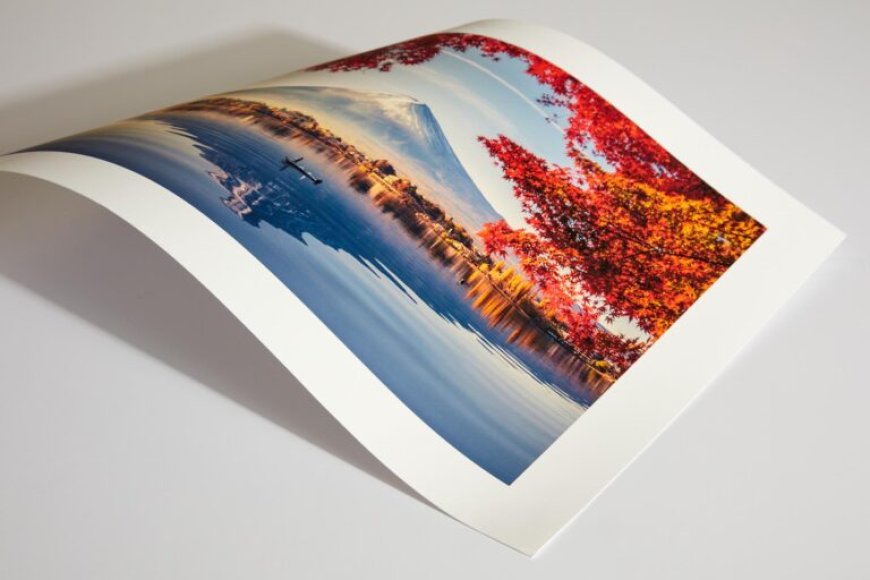What Is Fine Art Printing? A Beginner’s Guide for Dubai’s Creative Community
Explore the process, benefits, and techniques of fine art printing in Dubai. A perfect guide for artists, hobbyists, and students.

Introduction
Fine art printing Dubai has become a cornerstone for artists, photographers, designers, and collectors looking to bring their creative visions to life. As the city embraces a vibrant art and design culture, the demand for high-quality, museum-grade prints continues to grow. Whether you're a student exploring digital art or a hobbyist turning photography into collectible pieces, understanding the fundamentals of fine art printing can help you make informed decisions about presenting your work professionally.
What Is Fine Art Printing?
Fine art printing, often referred to as gicle printing, is a high-resolution, archival-quality printing process used to reproduce artwork or photographs with exceptional detail, color accuracy, and longevity. Unlike standard photo printing, which uses commercial-grade paper and inks, fine art printing involves:
-
Pigment-based inks
-
Acid-free, archival papers or canvas
-
High-end inkjet printers
This combination ensures the final print remains vibrant and fade-resistant for decades when stored or displayed properly.
Why Fine Art Printing Matters
1. Longevity and Archival Value
Fine art prints are made to not fade, yellow, or deteriorate over many generations. This is crucial for artists who wish to sell their work as limited editions or collectors seeking value retention.
2. Exceptional Image Quality
The level of detail captured in a fine art print is unparalleled. The process ensures that every nuancebrushstroke, texture, or photographic depthis preserved in the final output.
3. Professional Presentation
For exhibitions, galleries, or personal display, fine art prints elevate the perception of your work. The paper's own texture and quality add to its high-end appearance and feel.
Common Materials Used in Fine Art Printing
1. Paper Types
-
Cotton Rag Paper: Soft texture, ideal for watercolor and pencil reproductions.
-
Baryta Paper: High gloss, perfect for black-and-white photography.
-
Textured Fine Art Paper: Adds depth and a tactile feel to artwork.
2. Canvas
Used for a more traditional, painterly finish. Often stretched and framed like original paintings.
3. Inks
-
Pigment-Based Inks: Offer better lightfastness and color stability than dye-based alternatives.
These resources were chosen with care to ensure longevity and archive standards.
The Fine Art Printing Process
1. Image Preparation
Before printing, ensure the artwork or photo is:
-
High resolution (typically 300 DPI or more)
-
Color corrected
-
Free of dust, blemishes, or imperfections
To preserve the broadest gamut possible, several experts advise working in Adobe RGB color space.
2. Proofing
A test print (or proof) is usually created to ensure color accuracy and quality. Adjustments may be made based on how the colors translate from screen to paper.
3. Printing
The actual print is made using large-format inkjet printers. Every detail, from ink application to print head movement, is calibrated for maximum precision.
4. Finishing
Post-print options include:
-
Trimming
-
Mounting
-
Framing
-
Varnishing (for canvas prints)
These finishing touches help prepare the artwork for presentation or sale.
Benefits of Fine Art Printing in Dubai
1. Access to World-Class Facilities
Dubais art scene is supported by state-of-the-art printing labs that use global best practices. This means that both emerging and established creatives can access museum-quality output.
2. Ideal Environment for Display
Dubais climate-controlled galleries and design-conscious interiors make it an ideal city for preserving and showcasing fine art prints.
3. Cultural Fusion and Artistic Diversity
Artists in Dubai come from all over the world, creating a multicultural art community. Fine art printing supports this diversity by enabling a range of artistic expressions to be accurately reproduced.
Tips for Beginners
1. Start Small
Experiment with smaller prints to understand how your digital files translate into physical form.
2. Consult with Experts
Before placing a full order, talk to a print specialist. They can recommend the best paper and print settings based on your work.
3. Understand Editioning
If you plan to sell your art, consider offering limited edition prints. Numbering and signing them can increase their value.
4. Protect Your Prints
Use UV-protected glass when framing and store unframed prints in acid-free sleeves or portfolios.
Fine Art Printing vs. Standard Photo Printing
| Feature | Fine Art Printing | Standard Photo Printing |
|---|---|---|
| Ink Type | Pigment-based | Dye-based |
| Paper Type | Archival, acid-free | Glossy or semi-gloss photo paper |
| Longevity | 100+ years (with care) | 10-20 years |
| Detail and Texture | High | Moderate |
| Color Accuracy | Exceptional | Good |
| Intended Use | Galleries, exhibitions | Personal photos, everyday use |
This comparison shows why fine art printing is preferred for professional-grade artwork and photographic reproductions.
Final Thoughts
Fine art printing in Dubai provides a valuable service to the citys growing community of creatives. Whether you're preparing your first student portfolio or planning a gallery show, understanding the fine art printing process helps you produce work that looks stunning and stands the test of time. By investing in the right materials and techniques, you can present your art in a way that honors your vision and elevates its impact.



















